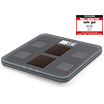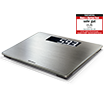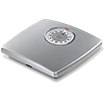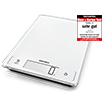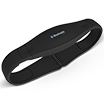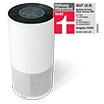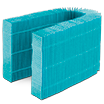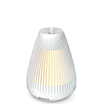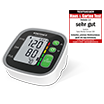Frequently Asked Questions (FAQ) - Nutritional Analysis Scales
Nutritional Analysis Scales
- Which nutritional values are programmed into the nutritional value analysis scales by Soehnle?
The median values of the nutritional value components of 950 foods are programmed into the Soehnle nutritional value analysis scales. The values are based on the German Federal Food Index version II., 3, May 1999, and on nutritional value tables for commercially available foods generated based on nutritional science. All Soehnle nutritional analysis scales store the values of the main food components like protein, carbohydrates, and fat, as well as calcium, cholesterol, fiber, and calories.
- Is it possible to program other foods into the Soehnle nutritional value analysis scales?
Soehnle provides a selection of different nutritional value analysis scales, which fulfill a variety of requirements depending on your needs.
The Food Control Plus, for example, offers the option of entering your own food selections. These need not be individual foods, but can be complete meals or menus. - I always eat the same meals! Do I have to enter every component each time or is there a different way?
Soehnle provides a selection of different nutritional value analysis scales, which fulfill a variety of requirements depending on your needs.
The Food Control Plus, for example, offers the option of entering your own food selections. These need not be individual foods, but can be complete meals or menus. - Can I change the food selection in the Soehnle nutritional value analysis scales?
Soehnle provides a selection of different nutritional value analysis scales, which fulfill a variety of requirements depending on your needs.
The Food Control Plus, for example, offers the option of entering your own food selections. - Can I adjust the nutritional value data of individual foods?
Soehnle provides a selection of different nutritional value analysis scales, which fulfill a variety of requirements depending on your needs.
The Food Control Plus, for example, offers the option of entering your own food selection or changing individual nutritional values. - What does the sum memory of the Soehnle nutritional value analysis scales do?
The sum memory is one of the most important functions of the nutritional value analysis scales. With the assistance of the sum memory, it is possible to determine the values of complete meals or menus, and how much a person consumed throughout the day.
- I am a diabetic! Will Soehnle nutritional value analysis scales show bread units or control units?
Soehnle provides a selection of different nutritional value analysis scales, which fulfill a variety of requirements depending on your needs.
The Food Control Plus, for example, offers the option of displaying bread units or control units.
With other scales, one must use carbohydrates. - How can I calculate my daily values when I eat on the go?
Soehnle provides a selection of different nutritional value analysis scales, which fulfill a variety of requirements depending on your needs.
The Food Control Plus, for example, offers a separate operating terminal, which is easy to take along. On the road it is then possible to enter the food manually. The weight, however, must be estimated. - What carbohydrate conversion factor does the Food Control use to calculate bread units?
The Food Control is normally set up for 10 g carbohydrate = 1 BE.
However, you can alter this at any time:
First, switch on the scale.
Press the INP key, followed by the BE key.
The conversion factor will now flash in the display.
You can alter the conversion factor while the value is flashing.
Input the value 0.083.
Press the INP key again to store the new conversion factor.
Check your input again.
Press the INP key.
Press the BE key.
The value 0.083 should now be flashing. The input is correct.
The scale will use a conversion factor of 12 g carbohydrate per BE.The changeover procedure is also described in the operating instructions.
- Can I depend on the nutritional value data of the Soehnle nutritional value analysis scales?
The values are based on the German Federal Food Index version II., 3, May 1999, and on nutritional value tables for commercially available foods generated based on nutritional science.
The programmed nutritional values are non-binding median values. You may need to review whether the specific food used is labeled with different values or whether other circumstances might indicate different values. - Why is knowledge regarding the nutritional values of our foods important?
Let’s be aware of this: food is the only “energy source” for our body.
While we pay meticulous attention that we use precisely the right fuel for our automobiles, we take a more relaxed approach when it comes to our food.
A balanced, healthy diet, however, is important and in this regard so is the knowledge of the nutritional values of our foods. - Why is a nutritional value analysis scale better than nutritional value tables?
Very simple: Almost 1000 of the most commonly used foods are programmed into the Soehnle nutritional value analysis scales. Since the nutritional value analysis scale calculates the nutritional values of the weighted quantities during the weighing process, this is of course much faster and saves time poring over cumbersome tomes of food lists and point tables.

